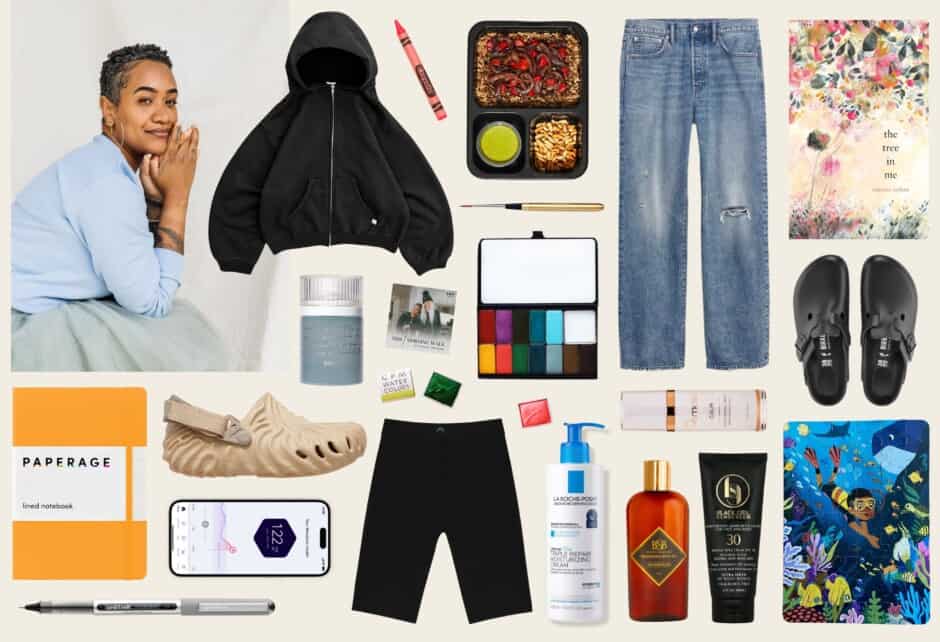
4 Tips For Transitioning Your Kids Back To Daycare
Written by Bridget Garsh
Photography by Photographed by Nicki Sebastian
Today’s article comes from our friends at NeighborSchools—where working parents can find the best home daycares for busy lives and precious little ones. Now more than ever, child care options are scarce, crazy expensive, and, in many cases, really stuffy and corporate. NeighborSchools home daycare finally offers an alternative: fully licensed providers, with years of experience, caring for a small number of children, all right in the neighborhood. They’ve helped thousands of working parents find child care, and now they’re helping us navigate reopening child care and explaining it all to our little ones. So, let’s dive in: how do we transition back to daycare in a world of COVID-19?
“Kids are resilient.” Like us, you’ve probably heard this sentiment more than a couple of times during this period of school closures, cancellations, birthday parades, and remote everything. And they are, we believe that. For the most part, kids are extremely adaptable and that has been a saving grace for many families.
But returning to daycare is going to be hard. Not just from a health and safety perspective, but an emotional one, too. There’s no doubt parents are stressed as they gear up to send their kids back to child care. What will the dreaded drop-off look like now? Will their kids be safe? How will they explain the limited closeness, the masks, the altered playtime?
To get answers to these questions, we talked to Dr. Kimberley Bennett, a child psychologist, about what we can do as parents to help transition back to daycare. Here’s what we learned:
HOME(WORK)
Like most things, this transition starts at home. Before going back to daycare, children need to be given an appropriate amount of time to process the upcoming changes. That means addressing their concerns early and often. Dr. Bennett stresses the importance of acknowledging children’s feelings—asking how they feel and then validating those feelings. Repeated reassurances and messages of safety will go a long way in building trust. She suggests saying something along the lines of: “It’s okay to feel scared or nervous or wobbly. Things are so different right now, people are giving each other space to keep everyone healthy.”
Most importantly, be the model—of course you’re worried about…well…everything, but try your best to be a safe, positive, and strong role model. Especially with infants and toddlers where you’ll be communicating this more non-verbally. Remember to stay calm and composed and your kids will be comforted by your steady presence. If you’re an anxious hot mess in front of your children, that’s the behavior they’re going to model. Be a hot mess, by all means, but hold out until after bedtime if at all possible.
NAIL THE STORY
Kids are going to have questions and concerns – whether they can articulate them or not. You know that feeling, when they can just tell something is off? Talk about it with them, and fill in the blanks. Take the initiative in explaining that the adults are still trying their hardest to keep everyone healthy. That means they’ll continue to wear masks, refrain from hugging, and do their best to keep germ spreading to a minimum.
When talking to your child about COVID-related things, craft the story to be one of kindness and looking out for one another, rather than something to fear. According to Dr. Bennett, we should let children guide the conversation, keep revisiting it, and answer all questions they throw at us as honestly as possible. If you need help with kid-friendly language to use, there are lots of free e-books about the pandemic written just for this reason, and NeighborSchools’ 6 book recommendations for transitioning back to daycare.
START SLOW + GET FAMILIAR
You know how kids often need a 5-minute warning before it’s time to leave somewhere? Well, the same rule applies here. Kids will need a lot of advance warning before returning to daycare. Building on that, Dr. Bennett recommends parents arrange a few outdoor meet-ups between children and their provider in an outdoor setting, and take time to develop the relationship (this is especially important for infants). A next step would be driving by the daycare to say hello and familiarize them with the space. Dr. Bennett notes that you can successfully reduce anxiety in these transitions by demonstrating the relationship. Have a friendly conversation with the Provider, showing you trust them, so it’s okay for your child to trust them too.
Another idea is to ask your provider to video themselves reading a story to your child prior to them returning. You can watch this together over and over to build familiarity.
Once you’ve done this legwork and it’s time for your child to go back, consider starting with shorter or reduced days to help them ease into the routine.
BE PATIENT + TEMPER EXPECTATIONS
Even if you do all of the above, you have to be realistic with your expectations. Transitions don’t happen overnight and regressions are a real and likely thing. Unfortunately, a lot of kids may experience some form of separation anxiety, and can you blame them? They’ve been practically glued to you for the last 3 months, and they likely haven’t had much experience playing in groups or being around unfamiliar adults or environments. Keep in mind, their anxiety may manifest in various ways: regressions, needing lights on or their door open at bedtime, bed wetting, and increased clinginess. All you can really do at this point is remember all they’ve been through and be there for them. Hold them when they cry, stay for the extra cuddle, give in to the pleas for a third bedtime story, all the while repeating to yourself our favorite parenting mantra of all time—THIS TOO SHALL PASS.
You’re gonna get through this. If you’re looking for more tips, check out the SAFE Model from Dr. Bennett as a shorthand advice for gently returning to child care after COVID-19. Start Slow, Acknowledge Feelings, Create Familiarity, and Set Realistic Expectations.
For more advice for working parents, head over to NeighborSchools’ blog. Plus, parents living in New England can find, tour and enroll in a NeighborSchools home daycare right from their website.
This post is brought to you by Mother + NeighborSchools.
Write a Comment
Share this story




My sister has to go back to work next month so she needs to find a daycare for her two-year-old daughter. I appreciate the advice about talking to your child about COVID problems and why they couldn’t be at daycare. I’ll share this with her as she continues her search for a good daycare to enroll her daughter in.